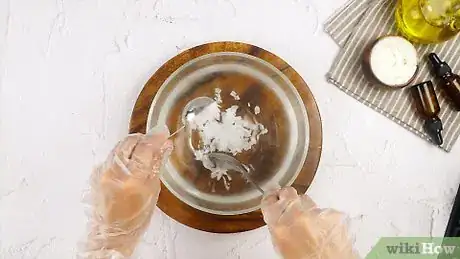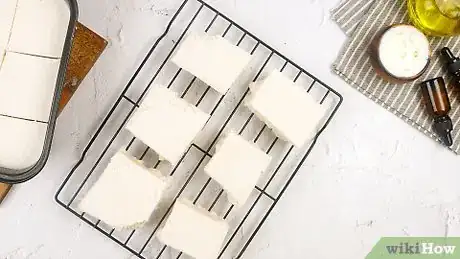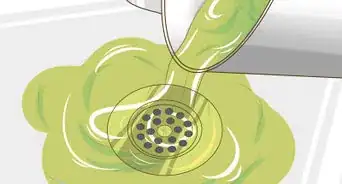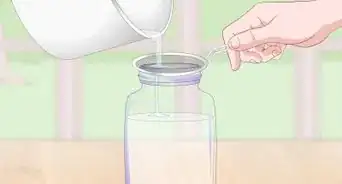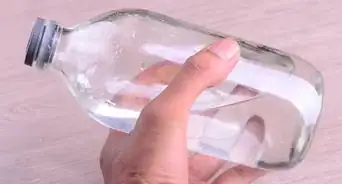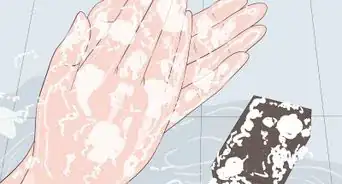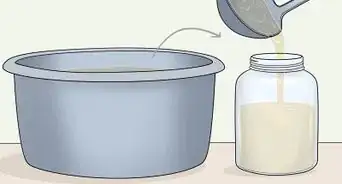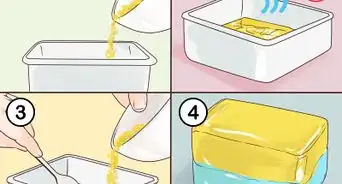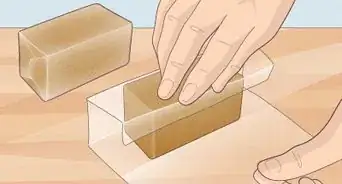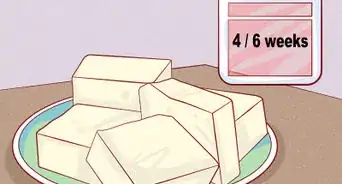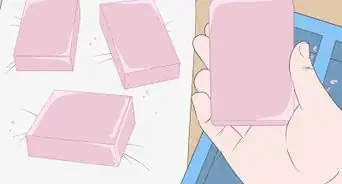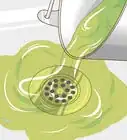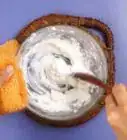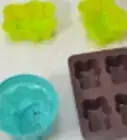X
wikiHow is a “wiki,” similar to Wikipedia, which means that many of our articles are co-written by multiple authors. To create this article, volunteer authors worked to edit and improve it over time.
The wikiHow Video Team also followed the article's instructions and verified that they work.
This article has been viewed 58,770 times.
Learn more...
A natural soap made using olive and coconut oils to leave your skin feeling soft and silky. This recipe serves as a great base for making other soaps too, such as a lemon, lime and coconut hair bar.
Ingredients
- 6 cups olive oil
- 2 1/4 cups coconut oil
- 3 1/2 cups solid vegetable shortening
- 1 1/2 cups lye
- 4 1/4 cups cold water
Steps
-
1Slowly add the lye 1 tablespoon (14.8 ml) at a time to the cold water while stirring continuously. (Lye is caustic and should not come into contact with your skin, avoid inhaling fumes and wear rubber gloves.) After you have stirred thoroughly, allow the mixture to sit until the temperature drops to between 95ºF and 98ºF.
-
2As the lye cools, place the oils and shortening together in a pot and heat it to 125ºF-130ºF.Advertisement
-
3Remove the pan from the heat and place a thermometer in the liquid and let the mixture cool, watching the temperature. When the two solutions are the same temperature, 96ºF, stir the oil mixture for about 30 seconds, and then add the lye mixture slowly but evenly in a steady stream. Do not stop stirring. When the consistency is like very thick gravy, the soap is ready for additives.
-
4Continue stirring while making additions, then pour the soap into the mold of choice. The simplest mold is a wax coated cardboard milk container.
-
5To make bars, pour the solution into a rectangular flat pan large enough to make the soap 1/2” to 2” thick.
-
6When the soap has had 24 hours or more to cure, use a hot knife to cut it into squares and remove it from the pan.
-
7After molding and shaping the soap, let it sit for 2-3 days in a dry place to cure. Use a wire cooling rack to sit the soaps on. Once cured, it does better if wrapped.
Advertisement
Community Q&A
-
QuestionIf lye is caustic and should not come in contact with skin during preparation, then why should someone use soap that has been made with it? What makes it safe to use after the soap has cured?
 Rebekah ArmstrongCommunity AnswerSome type of fat, such as olive oil, tallow or coconut oil, is used in soap making as well as lye. When fat and lye are combined in correct proportions, a chemical reaction called sporification occurs. The result is soap plus glycerin. When properly prepared and cured for several weeks, no lye remains in the soap.
Rebekah ArmstrongCommunity AnswerSome type of fat, such as olive oil, tallow or coconut oil, is used in soap making as well as lye. When fat and lye are combined in correct proportions, a chemical reaction called sporification occurs. The result is soap plus glycerin. When properly prepared and cured for several weeks, no lye remains in the soap. -
QuestionIt is the same potash we use in cooking?
 Mzm555Top AnswererNot exactly. The lye you will use for bar soaps is sodium hydroxide, a strong base/alkali that is corrosive to skin, proteins, and aluminium, among a range of other substances. Liquid soap uses potassium hydroxide, an even stronger (and more expensive) base/alkali, that is equally corrosive. Avoid contact with skin, eyes, nose, and mouth. If contact occurs, wash off with plenty of water and seek medical attention.
Mzm555Top AnswererNot exactly. The lye you will use for bar soaps is sodium hydroxide, a strong base/alkali that is corrosive to skin, proteins, and aluminium, among a range of other substances. Liquid soap uses potassium hydroxide, an even stronger (and more expensive) base/alkali, that is equally corrosive. Avoid contact with skin, eyes, nose, and mouth. If contact occurs, wash off with plenty of water and seek medical attention. -
QuestionYou talk about correct proportion, how I know if I am using the right ratio of oil to lye?
 Mzm555Top AnswererThis can be calculated manually using SAP values, or you can use an online soap-making lye calculator to calculate it for you. SoapCalc, and Majestic Mountain Sage are probably the two most popular/reputable ones around.
Mzm555Top AnswererThis can be calculated manually using SAP values, or you can use an online soap-making lye calculator to calculate it for you. SoapCalc, and Majestic Mountain Sage are probably the two most popular/reputable ones around.
Advertisement
Things You'll Need
- Saucepan
- Wooden spoon
- Rubber gloves
- Soap mold
- Hot knife
- Wire cooling rack
- Wrapping
About This Article
Advertisement
